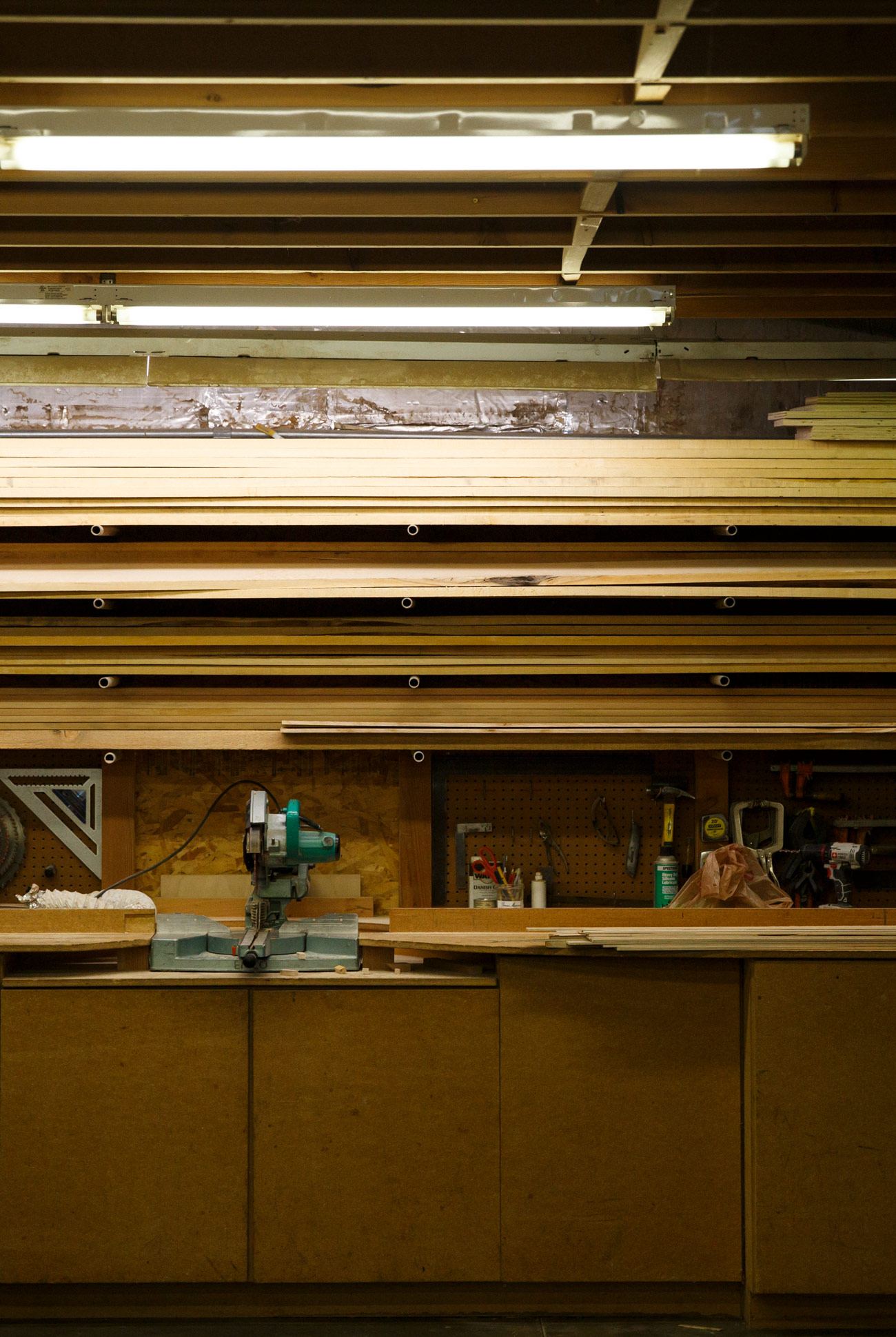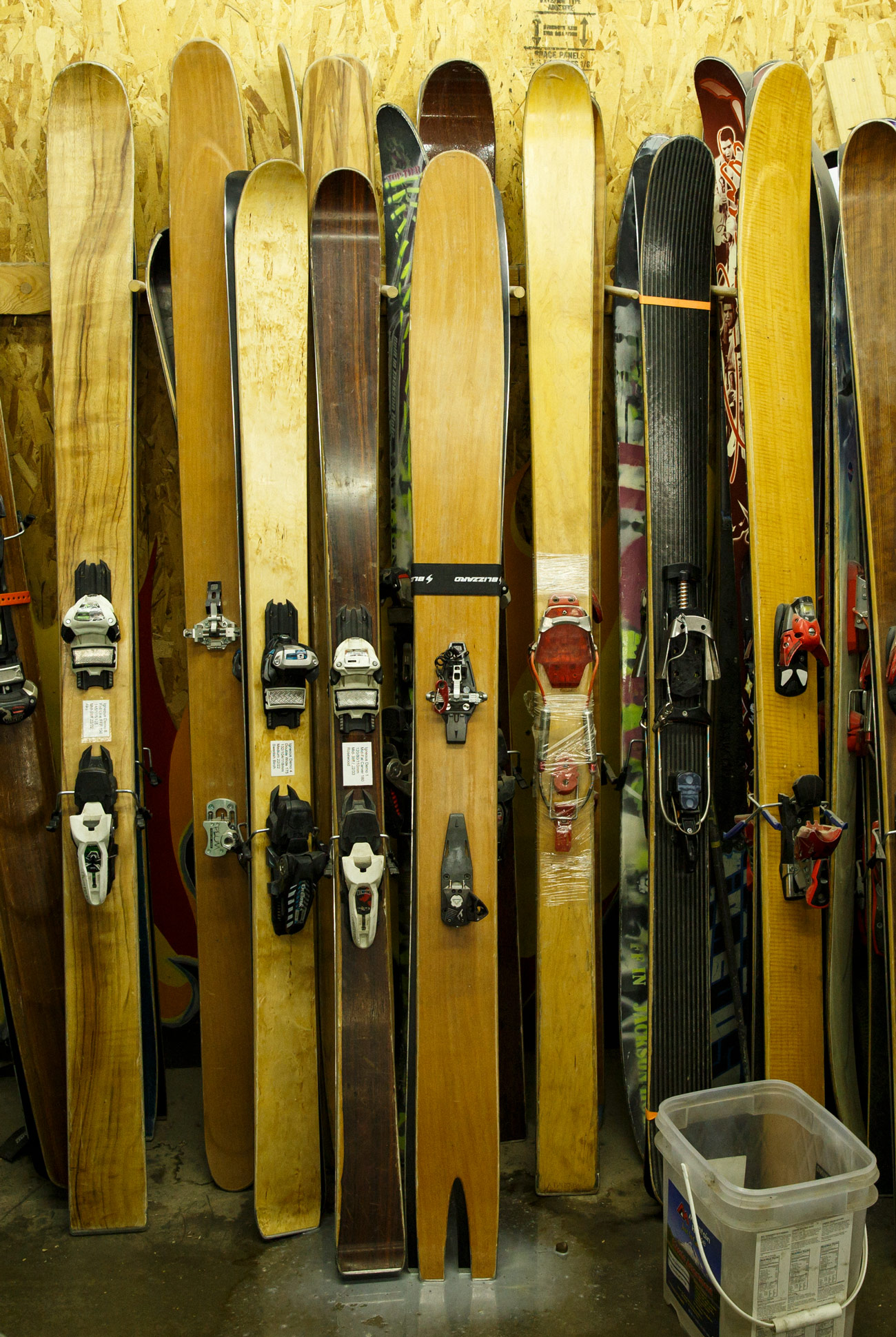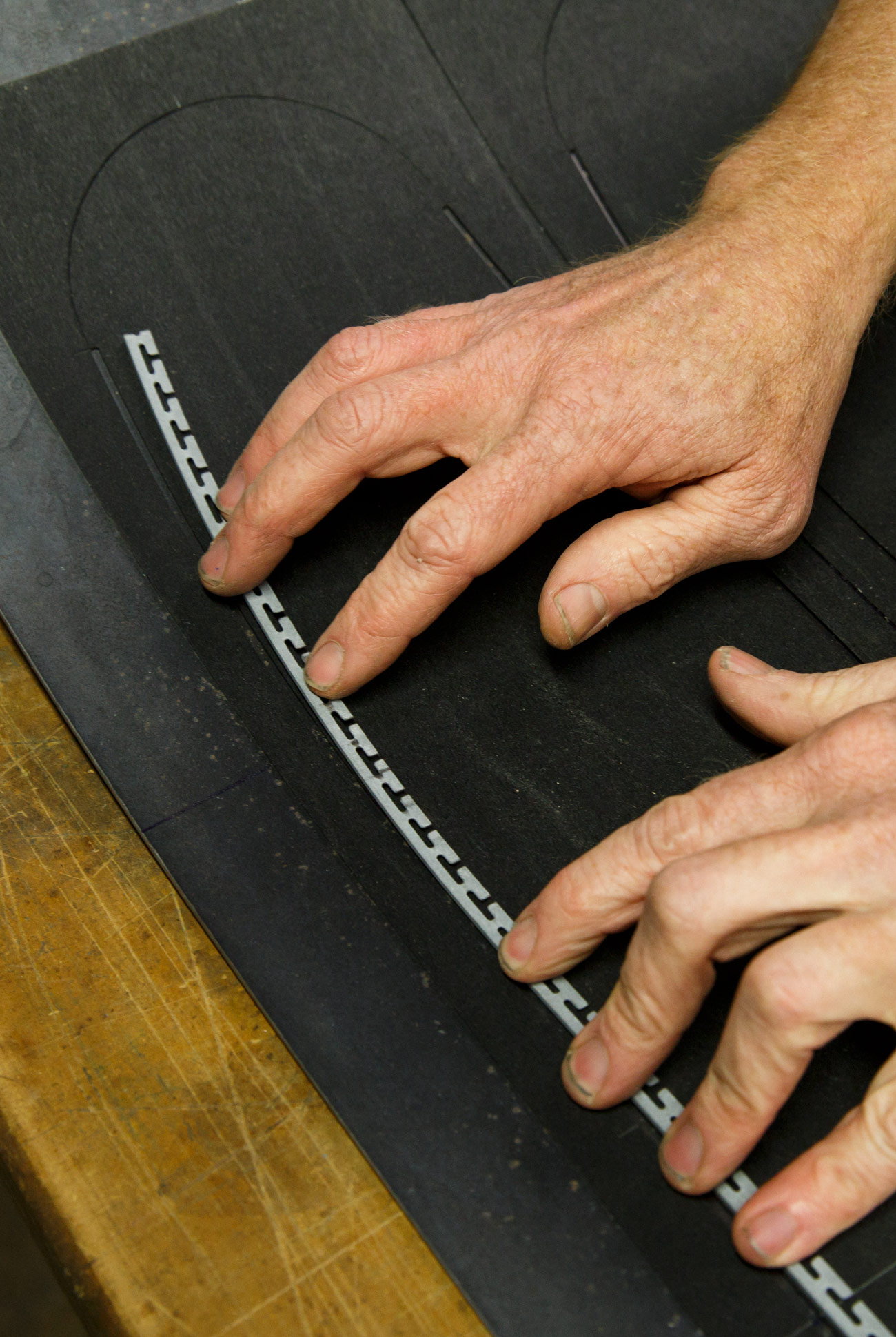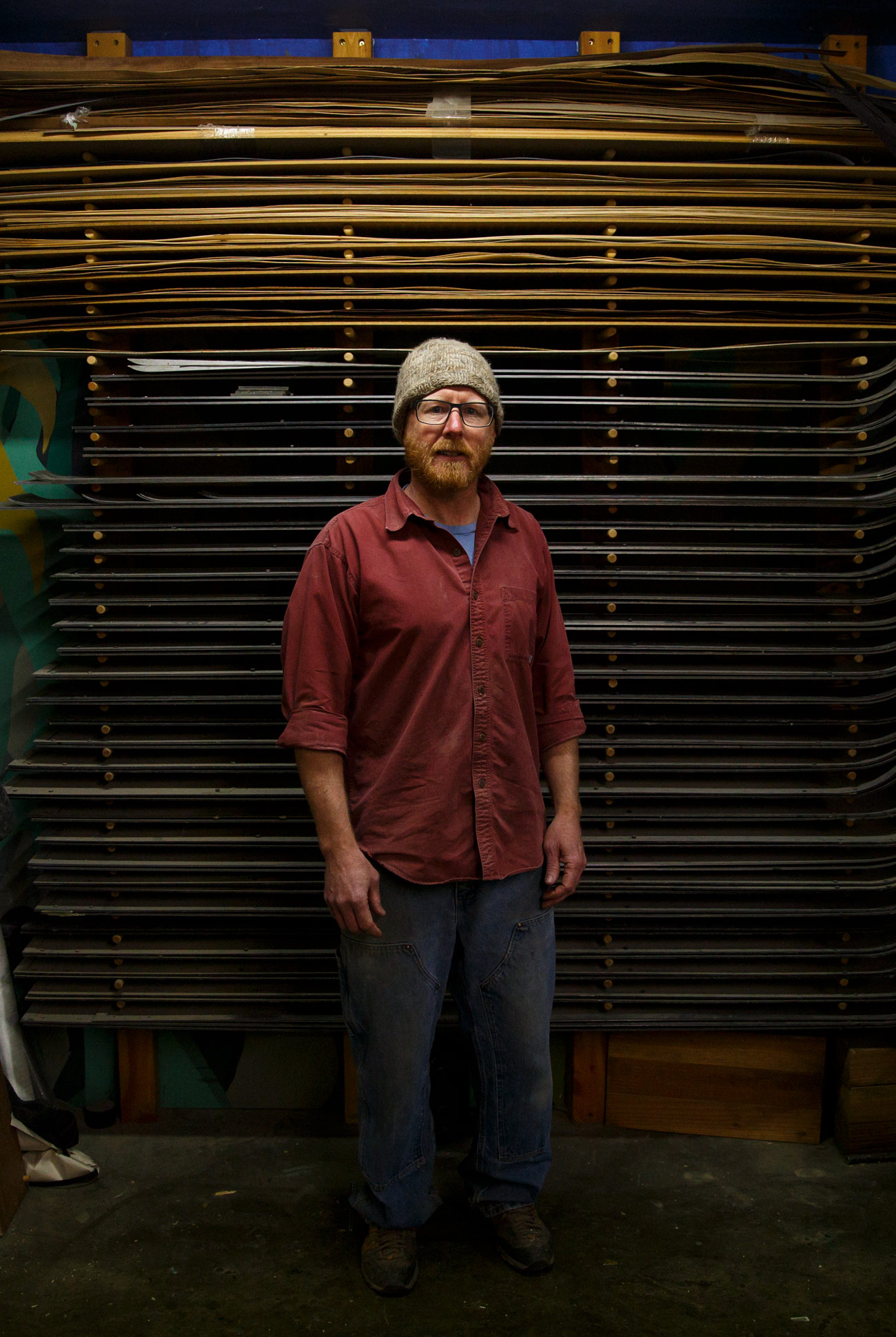In the shadow of the Tetons, down a nondescript lane in Jackson, Wyoming, lies nondescript building. Its windowless face is sided with plain boards painted tan, its roof clad with corrugated metal. There’s an auto repair shop next door, but there are machines inside this building too. Inside, there’s a genius at work. Well, unless he’s out skiing. This is the Igneous Skis workshop.
Michael Parris, the mastermind behind Igneous, has been building custom skis by hand for almost 20 years. Watching him work is akin to witnessing a master chef navigate the fire and frenzy of a working kitchen to produce a perfectly plated paella. His movements through the shop are deliberate, and the way in which he plies the metal, wood and glue that are pervasive throughout the space is almost subconscious. Despite what might otherwise be an obvious conviction, Parris hasn’t been doing this for his entire life. In fact, he didn’t even found Igneous.

It was Adam Sherman, a longtime friend of Parris, who did that. The two met at a small ski hill in Pennsylvania called Blue Knob. Years later, Parris, who had briefly dropped out of school, joined Sherman, who had relocated to Jackson, Wyoming. It was the early 90s — skis were still very straight, and commonly came in lengths exceeding 210 centimeters. Sherman became drawn to snowboard shapes and the unique lines they allowed for on the mountain. In 1993, the pair attended the Snowsports Industries America trade show in Las Vegas and Sherman was further impressed by the quantity of startup snowboard companies exhibiting. “He was like, ‘Well if these guys can make snowboards in their garages, maybe I can make some skis’,” says Parris, describing Sherman’s assessment of the show.
Sherman began peeling apart old skis to examine their inner organs, and used that as a study for his first ski prototypes. Parris was back to his studies at Carnegie Mellon but made a point to visit Jackson and help out in the shop during school breaks. A degree in engineering earned him a job at the university building not skis, but robots.
Despite what might otherwise be an obvious conviction, Parris hasn’t been doing this for his entire life.
For Parris, robotics projects were leisure-time undertakings — he describes an exoskeleton for a human arm that can be controlled from a remote as “an art project” — but work wasn’t all tinkering. Parris became a member of a team developing robots for NASA’s lunar and Mars rover programs. Parris and a team of roughly six engineers were tasked with perfecting four-wheeled vehicles with articulating chassis capable of climbing over obstacles the size of their own wheels. Trips to Wyoming were traded in for month-long prototype testing stints in Chile’s Atacama Desert and later, Antarctica.

“That project was a meteorite search project,” says Parris. As it turns out, the ice-covered landscape of the world’s southernmost continent is fertile with meteorites, where the constant flow of ice decreases the distribution of rocks on the surface. “You can imagine a meteor that’s fallen, it’s an even distribution but the way the ice flows they might be more concentrated in certain areas. If you comb the entire ice sheet, you might go to where there are sub-surface mountain ranges and things that interrupt the flow of the ice and cause it to flow upward and spit the rocks to the surface.”
Researchers working for the National Science Foundation can comb the ice manually, or they can have a robot do it, which is where Parris and his team came into play. The meteorite-finding robot was a success, but when Parris and his team requested further funding, they were declined. It was a fortuitous downturn. “I was kind of missing skiing being down there in snow and mountains,” says Parris. So he decided to take some time off and moved to Jackson, Wyoming full-time, where he joined Sherman at the Igneous workshop.
Parris immediately set out to make good on the then-revolutionary notion that skis don’t have to be long and straight. “The plan was to make some skis that you could ride like a snowboard,” he says. “The other plan was making skis that lasted for a full season at Jackson, riding 100 days, making something that held up to the terrain here, because everybody was breaking stuff.”
“You see somebody with these skis and ask them, ‘Hey what are those skis?,’ and the next question is going to be, ‘how do you like them?’ And so you have the conversation about it and the last guy who bought your skis is now your salesman.”
Sherman and Parris weren’t dreaming small either. The pair wanted to be a presence within the ski industry, so they ramped up production from about to 300 or 400 pairs of skis per year. Igneous did garner some well-earned acclaim, but neither Sherman nor Parris were satisfied. “We were working long hours and not skiing as much as we wanted to and not paying ourselves — so we were just getting old,” says Parris.
So the pair scaled back. They made skis for themselves and their friends. They stopped marketing the company, too. Igneous skis are plain to those in the know thanks to their all-wood veneer top sheets, but they are also deridingly lacking in logos and branding. “It was just word of mouth; seeing who showed up and what they wanted,” explains Parris. “It’s still just word of mouth. You see somebody with these skis and ask them, ‘Hey what are those skis?,’ and the next question is going to be, ‘how do you like them?’ And so you have the conversation about it and the last guy who bought your skis is now your salesman.” It worked; slowly, Igneous began to find its place.
In 2007, Sherman moved back to Maryland to become a firefighter, paramedic and physician’s assistant; Parris stayed in the Tetons, building skis. At the heart of Parris’s process is a high level of individualized customization. Providing that not only requires a microscopic understanding of how skis are built, but also a closer relationship with the customer than a factory worker building skis in Austria will ever get. For that, Parris and Sherman devised an interview process in order to figure out where, how and why a customer skis. It’s a line of questioning that’s straightforward, but borders on existential: “How and where you can come up with,” says Parris, “but why you ski? People were like, “huh?”

Nevertheless, Parris can gain a remarkable amount of information through a simple conversation. “Our clients don’t necessarily have the vocabulary to talk about their skiing in terms of what they want, but I can ask them a series of questions, and pick their brain a little bit, and figure out something that’ll suit them,” says Parris. He also seeks out information from a client’s friends, instructors and guides who might have more insight. And then, Parris is happy to make a couple turns with a client up on Teton Pass and make observations first hand.
From there, what’s left is to build the actual ski. The way Parris describes it, the process is straightforward and simple, but maybe that’s just compared to building robots. At the very least, it’s incredibly sensible. Parris starts with the ski’s core. A core can be made from many types of wood — maple, white ash, Douglas fir, poplar — and many comprise more than a single species. Parris builds the sidewalls with hard maple for added durability. Then there’s base material, graphite, fiberglass, aluminum, kevlar and triaxial glass. Saws and planers and pliers are involved. Glue, finishing, ski wax. The outcome is designed to carry a body down a mountain at amazing speed. But more than that, the result is graceful, curvy, grainy; Igneous skis are beautiful enough to hang untouched on a wall. But that would be an unfortunate waste.
When Parris first joined Sherman at Igneous, he harbored very different ideas about building skis. “I had thoughts of automating the process and basically designing a ski manufacturing robot. A machine where you’d feed raw materials into one end and it’d spit a ski out the other end,” he says. But he soon realized that, like the idea of producing 300 to 400 pairs of skis per year, that would go against exactly what makes Igneous skis so special. “I realized as I got back in touch with working with my hands, that that’s what I really like to do,” says Parris. Now, he makes roughly 100 pairs each year, which allows him to pay singular attention to each step in the process. And, it affords him more time to do what he came to Jackson to do in the first place: ski.
“I go out and ski in the mornings and think about the skis that I’m on and how I can make them better, and I come in and have somebody’s name on my production list — making skis for Bill today. I think about the last time I skied with Bill and what he’s told me about the skis I made for him last time and just get to work. Keeping it small is key.”


